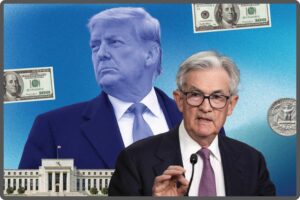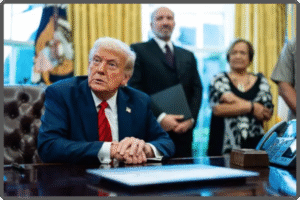Trump vs. Federal Reserve: A Battle Over Monetary Policy and Economic Power
The relationship between former President Donald Trump and the Federal Reserve (often called “the Fed”) was one of the most high-profile economic dramas of his presidency. At its core, this clash highlighted the delicate balance between political leadership and economic independence—a balance that can shape everything from interest rates to job growth.
In this post, we’ll break down what the Federal Reserve does, why Trump had issues with it, and what it all means for the economy. Whether you’re a policy wonk or just trying to understand how presidential tweets impact the stock market, we’ve got you covered.
What Is the Federal Reserve, and Why Does It Matter?
The Federal Reserve is the central bank of the United States, and its job is to keep the economy stable and growing. Here’s what it does:
-
Sets interest rates: The Fed adjusts the federal funds rate to influence borrowing and lending.
-
Controls the money supply: It manages inflation and promotes employment by adjusting how much money is in circulation.
-
Regulates banks: The Fed oversees major banks to ensure they’re operating safely.
-
Maintains financial stability: It acts during crises to keep markets functioning (as seen during the 2008 financial crash and the COVID-19 pandemic).
Why Independence Matters
The Federal Reserve is independent from the White House and Congress. That means it makes decisions based on economic data, not politics. This independence is crucial for long-term economic health, even if short-term decisions aren’t always popular with politicians.
Trump’s Take on the Federal Reserve
Donald Trump had a very public, often combative relationship with the Fed, especially with Federal Reserve Chair Jerome Powell, whom Trump appointed in 2018.
Trump’s Core Beliefs
-
Low interest rates are good: Trump wanted near-zero interest rates to boost borrowing, investment, and stock market performance.
-
The Fed is too slow: He believed the Fed didn’t cut rates fast enough and was hurting U.S. economic growth.
-
Strong dollar = weak exports: Trump wanted a weaker dollar to help U.S. exports, something the Fed influences through interest rate policy.
Notable Moments in the Trump-Fed Feud
The Trump vs. Federal Reserve story was filled with tension, tweets, and headlines. Here are a few memorable moments:
1. Twitter Attacks on Jerome Powell
Throughout his presidency, Trump used Twitter to criticize Powell and the Fed:
“The Fed is like a powerful golfer who can’t score because he has no touch – he can’t putt!”
— Donald Trump, August 2019
Trump frequently blamed Powell for stock market dips or economic slowdowns, saying the Fed was making “all the wrong moves.”
2. Calls for Negative Interest Rates
Trump occasionally pushed for negative interest rates, a controversial idea where people pay to keep money in the bank. While used in places like Japan and Europe, most economists say it’s risky in the U.S. context.
3. Rumors of Firing Powell
At one point, Trump reportedly explored whether he could fire or demote Powell. While he ultimately didn’t, it sparked debates over how independent the Fed truly is—and whether it could survive political pressure.
Economic Impacts of the Trump-Fed Conflict
So, what did all this back-and-forth actually do? Let’s look at the economic implications.
1. Market Volatility
Markets often react to uncertainty—and Trump’s frequent jabs at the Fed created just that. Investors were left guessing whether the Fed would follow its own path or bend to political pressure.
2. Short-Term Gains, Long-Term Questions
While Trump’s pressure may have contributed to rate cuts in 2019 (the Fed lowered rates three times that year), some economists argued that it wasn’t sustainable policy. Cutting rates when the economy is already strong can limit tools during a real downturn.
3. Undermining Fed Credibility?
Repeated attacks on the Fed risked undermining its credibility. If the public starts to believe the central bank is politically influenced, it can lose its effectiveness in managing inflation and financial stability.
The Bigger Picture: Why It All Matters
The Trump vs. Federal Reserve saga wasn’t just a personal feud—it raised important questions about how economic decisions are made in America.
Key Takeaways
-
Presidents want growth—especially before elections. But the Fed’s job is to think longer-term, which sometimes means short-term pain.
-
Central bank independence is vital—for inflation control, market confidence, and economic resilience.
-
Public perception matters—when leaders challenge institutions, it shapes how people view those institutions and their decisions.
Final Thoughts: A Tense but Telling Relationship
The clash between Donald Trump and the Federal Reserve was a rare window into the tension between politics and economic policy. While the Fed ultimately maintained its independence under Powell, the conflict showed how fragile that balance can be.
Whether you’re concerned about inflation, your mortgage rate, or the future of the economy, the dynamic between the president and the Fed plays a key role. As debates over monetary policy continue, especially in election years, it’s a relationship worth watching—closely.


